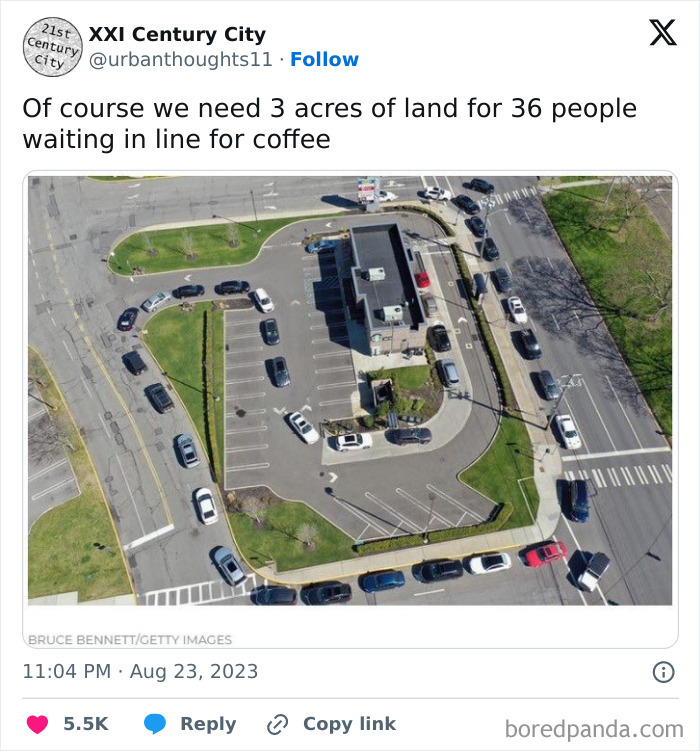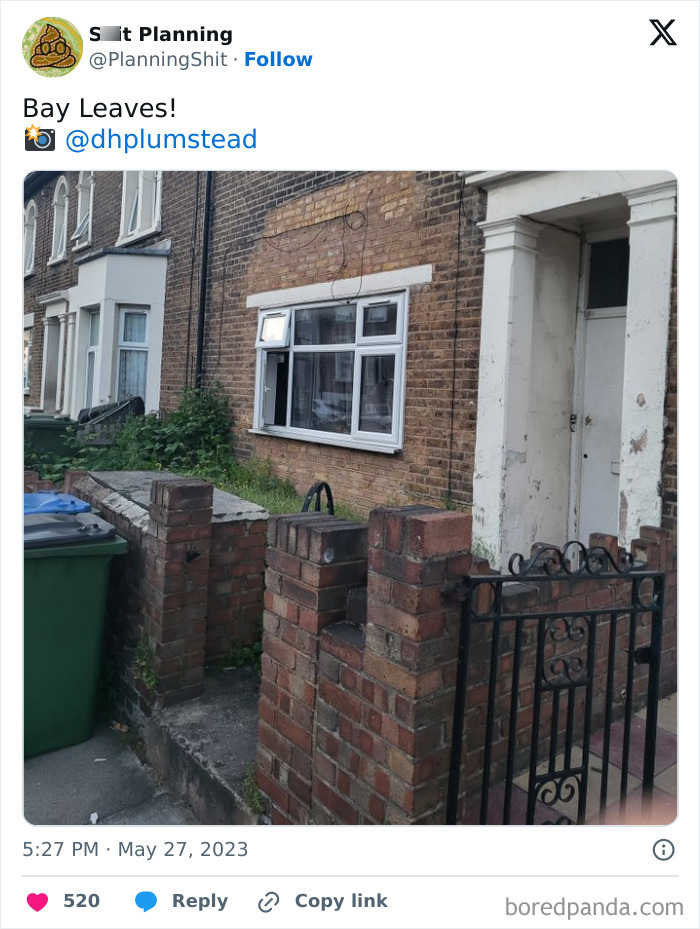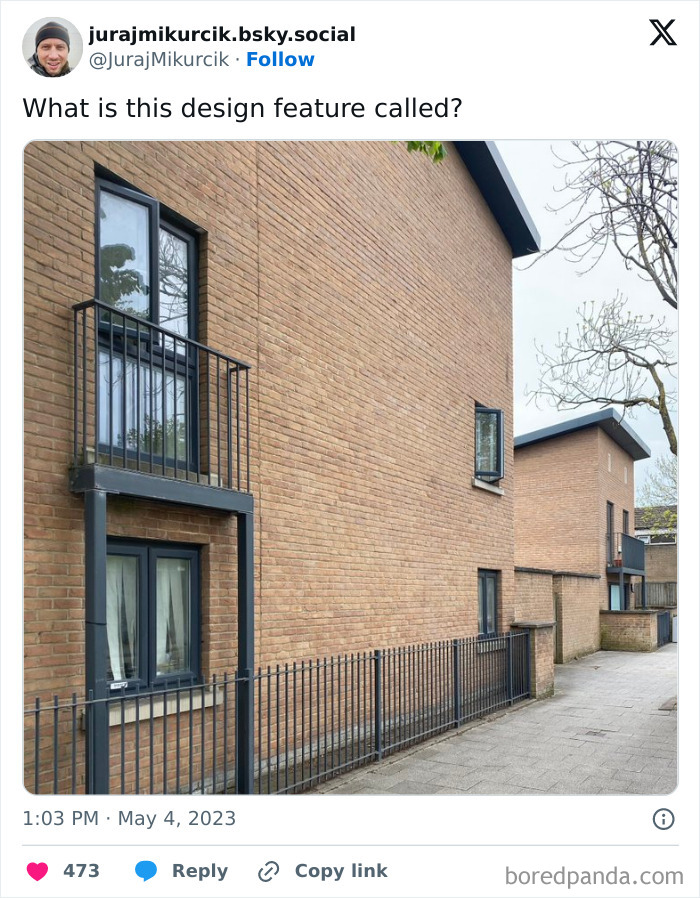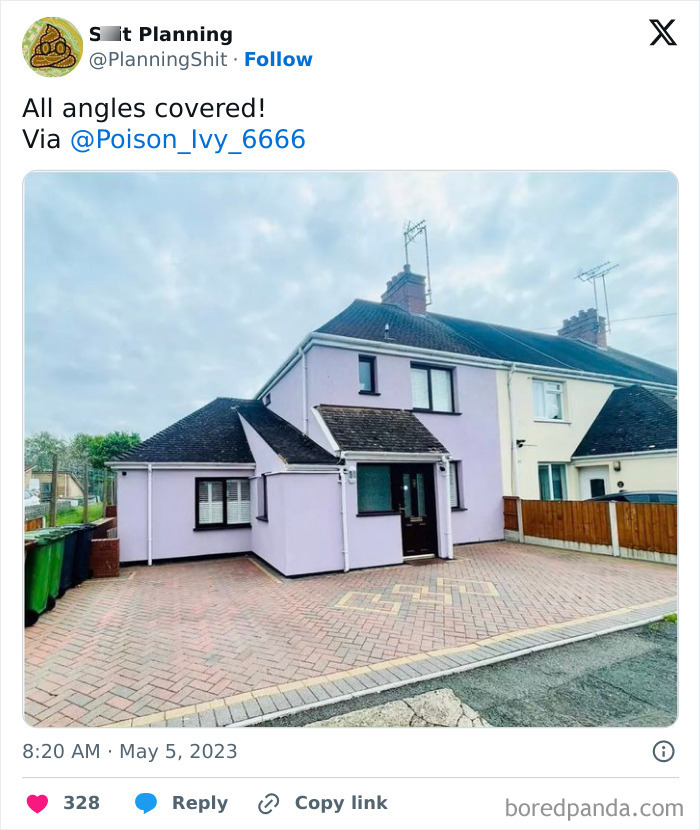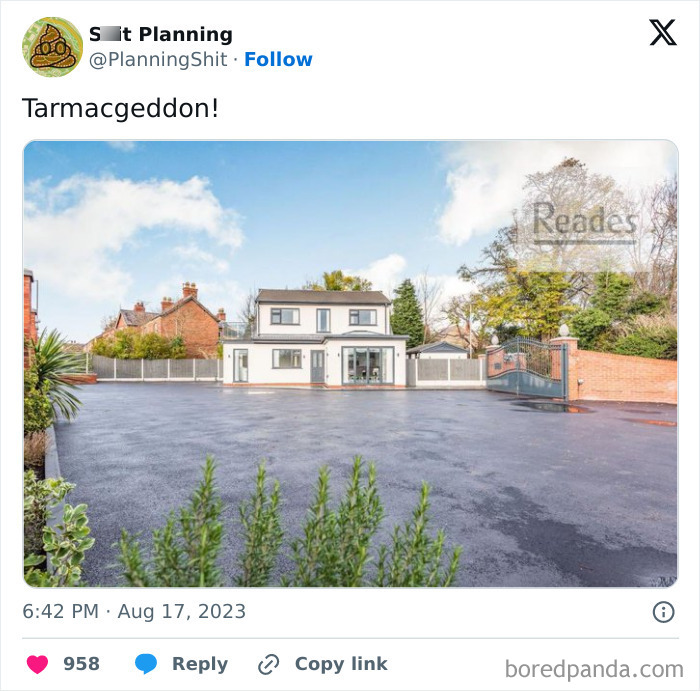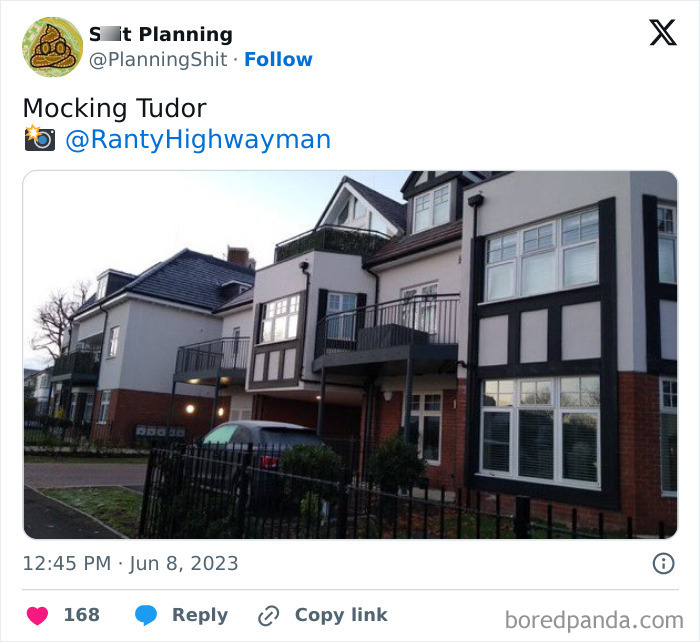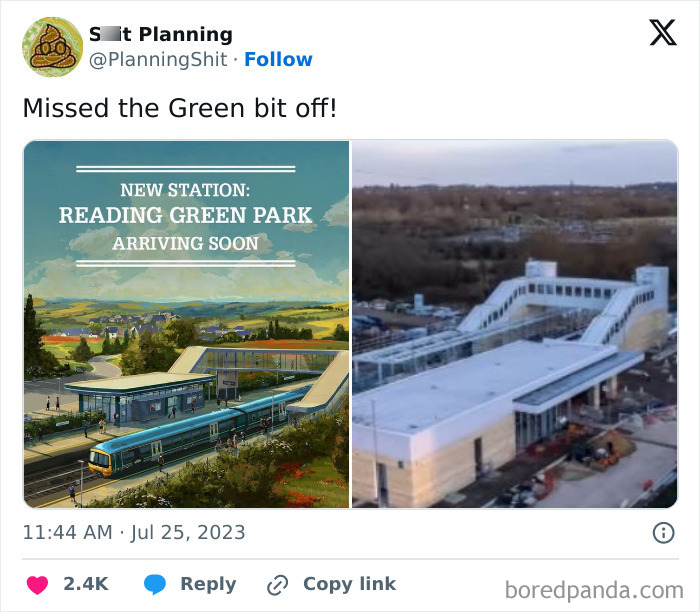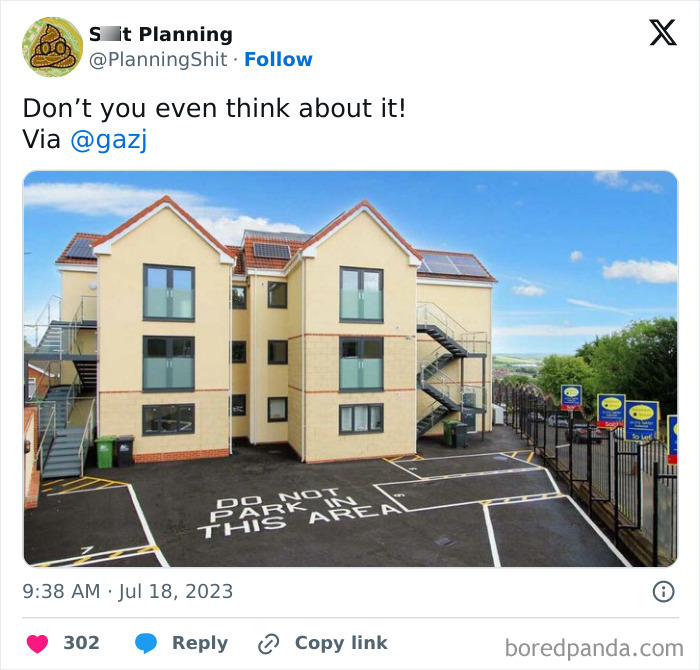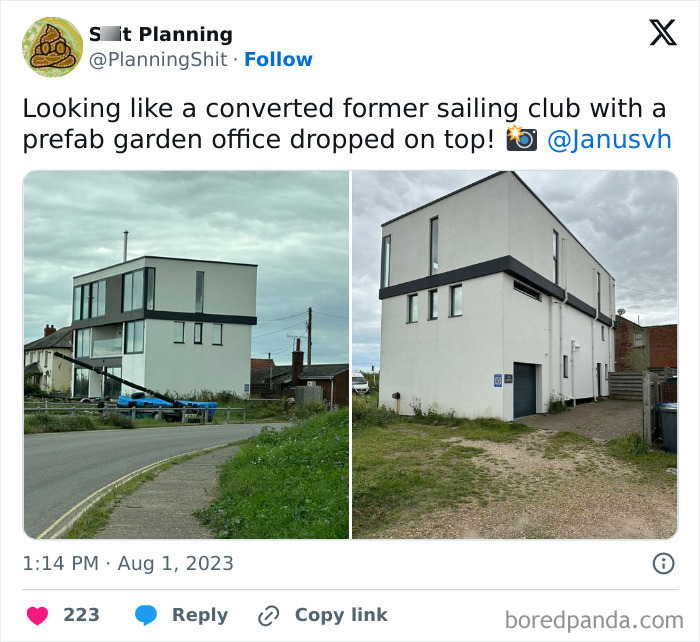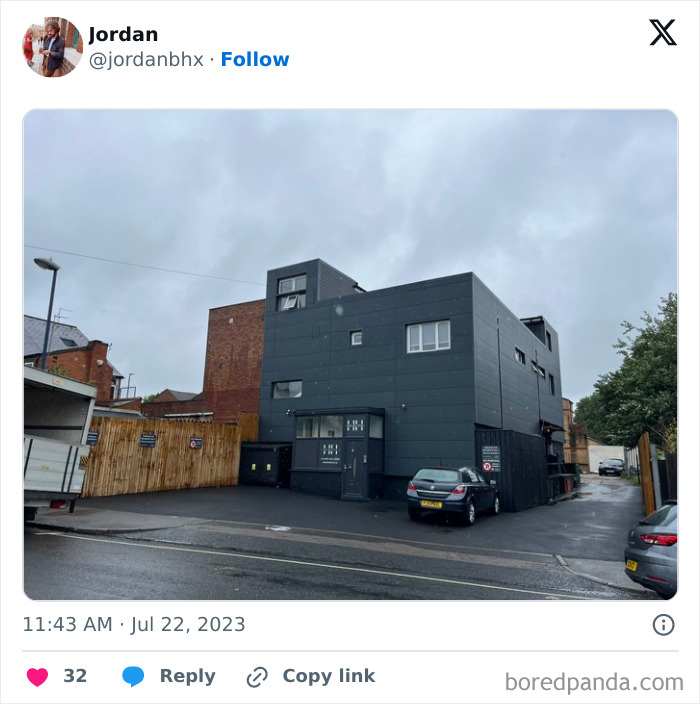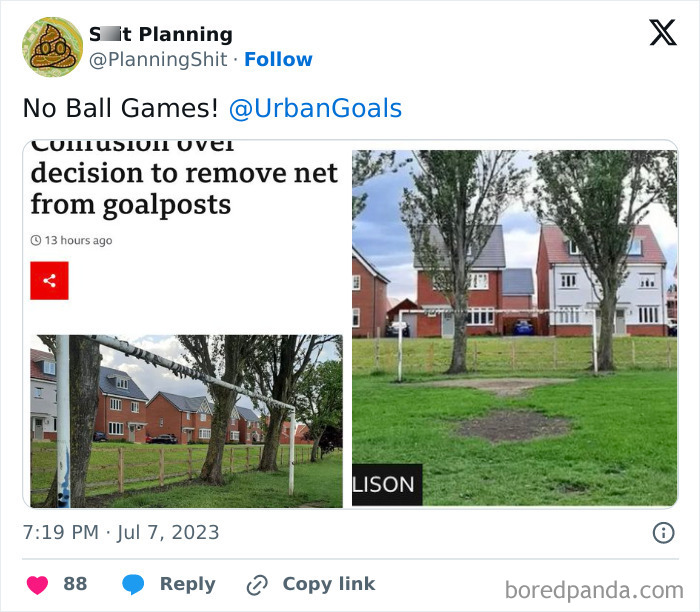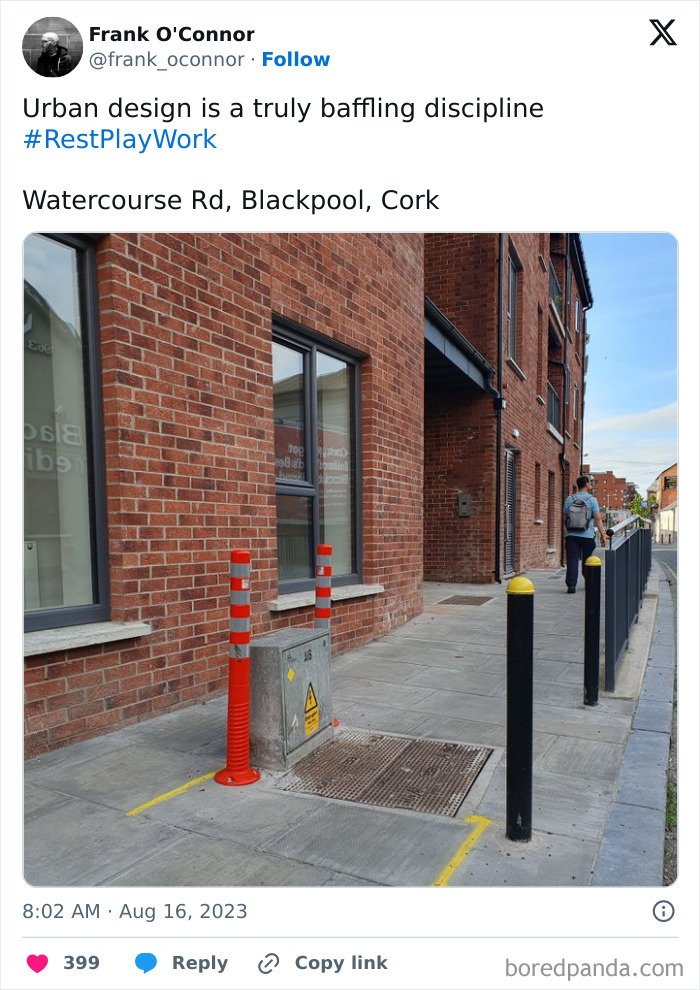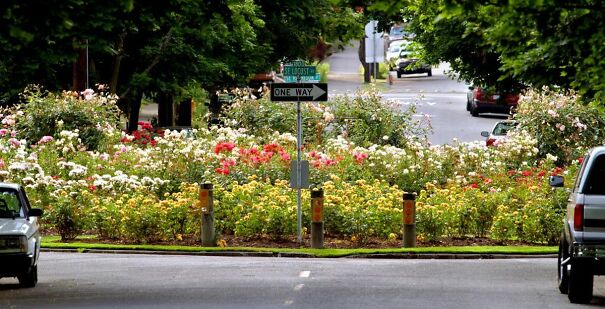
30 Architects Who Did Not Think Their Projects Through And Created Eyesores (New Pics)
Interview With Expert“Measure twice, cut once” sounds like common sense. However, that’s easier said than done. Some ‘professionals’ are in such a hurry to get their jobs done that their results end up negatively impacting a whole bunch of people.
The ‘Bad Planning’ account on X (formerly Twitter) calls out incompetent and negligent architects, planners, surveyors, and engineers who made egregious and long-lasting mistakes. We’ve collected some of the top photos of design eyesores to show you how a failure to plan affects the entire project and everyone living near there. Scroll down to see what that looks like.
Bored Panda wanted to learn more about what poor city planning looks like, so we reached out to Sweden-based urban planner and designer Luka Kodikaitė. She was kind enough to shed some light on the topic and shared her perspective on the negative impact of car-centric cities. Read on for our full interview with her.
This post may include affiliate links.
We wanted to learn more about poor city planning and how it can impact residents in a negative way. According to Kodikaitė, some of the worst examples of poor city planning often prioritize cars over people.
"With the rise of the automobile, cities experienced a shift towards environments heavily reliant on cars for daily commuting, resulting in longer distances, wider roads, and increased parking space at the expense of green areas," the Sweden-based urban planner explained to Bored Panda.
"One infamous case that altered urban planning history is the clash between Jane Jacobs, a grassroots activist, and Robert Moses, a New York City urban planner, regarding the proposed construction of the Lower Manhattan Expressway. Jacobs argued against carving up inner-city communities for the sake of expressways, emphasizing the detrimental impact on neighborhoods and community life," she shared.
"This emphasis on car use is also reflected in the treatment of urban cycling by planners. Cyclists are often marginalized and perceived negatively in comparison to drivers. We see such hazardous examples such as bike lanes placed on high-speed roads or highways, where cyclists are extremely more vulnerable in traffic situations compared to cars."
These car-centric cities can have lots of negative consequences for the people living there, from increased air pollution and traffic congestion to ugly environments and reduced walkability.
"Another detrimental by-product of car-oriented development is the urban sprawl, leading to low-density suburbs lacking essential amenities and perpetuating car dependency while discouraging walkability," Kodikaitė told Bored Panda.
Same person fixing this, as the one fixing electrical wire in the church pic we have seen on BP before?
With all of this in mind, we were interested in finding out how planners and architects can become more aware of making potential mistakes or decisions with negative consequences.
"Unfortunately, in our current economic system, funding decides the quality of the projects. However, there are still ways that planners and architects can influence the outcomes within those frames," the urban planner told Bored Panda.
"One pitfall to avoid is the tendency to adopt a 'one-plan-fits-all' mentality. The same concept applied in one country or community will probably function differently when applied in a different context. An effective approach is to actively involve the community and stakeholders in the planning process. By listening to the people who will inhabit the spaces, unexpected insights can emerge, completely turning around the preconceived ideas that were initially based on well-intended, yet stereotyped, assumptions," Kodikaitė urged planners to approach these decisions from a different perspective and be more involved with the community.
This is a great idea, just change the glass to clear, and his dog or cat can look out St the world.
“On the other hand, in some cases, planners and architects can become too rigidly set in their old ways, adopting the ‘we’ve always done this way, and it worked just fine’ mentality without acknowledging that the current has become outdated. Examples exist in other countries which have data to prove that different models and approaches can be significantly greater, yet planners in other countries refuse to apply it, thinking it would never work on their soil," she pointed out that this sort of narrowmindedness can be detrimental to everyone.
"Lastly, in the current day’s spirit of sustainable thinking, planners ought to work with the future in mind. Designing sustainably long term involves creating adaptable spaces and structures capable of evolving alongside changing needs and circumstances. This approach minimizes resource waste and ensures long-term viability."
According to The World Bank, around 56%—a jaw-dropping 4.4 billion—of all people on Earth live in cities. This trend of urbanization is only going to grow in the coming decades.
By 2050, it’s thought that nearly 7 out of 10 people on the planet will live in cities. However, this brings with it some massive challenges. How do you build cities in such a way as to comfortably accommodate a rapidly rising number of residents?
Seem like a bathroom, may be nice with the fresh air. A more beautiful solution could have existed, though. 😂
There's no community any more. Let the children sit in front of their screens, rather than play with neighbourhood children. Then we wonder why they have trouble communicating to one another, are obese and can't play active games. this is an oversimplification, but surely there's a problem when children aren't allowed to play.
There are plenty of issues to consider, from offering plenty of accommodation and good transportation systems to how you integrate green areas into the beating urban heart of the megapolis.
Not only that, but you also have to consider how the architectural and design details affect the population. That includes buildings and roads but also extends to everything from lampposts and benches to how you design trash cans.
There must be something wrong with me, I rather like it. Not much, because it's not an attractive building as such, but preferable to unstaggered ( sorry can't think of the word, only just got up)
At the very least put a garden bed under there and pretend it's meant to look like that.
Your mental and emotional health can vary quite a bit depending on your surroundings. Think about how you’d feel living surrounded by minimalist designs, industrial buildings, and brutalist homes all day, every day. Then consider how you’d feel if you walked past historical buildings, parks, and architecturally unique homes on your way to work or school. Being surrounded by beauty can do wonders for our health and happiness.
The ‘Bad Planning’ account was created nearly 5 years ago, back in July 2019. In the half a decade since its founding, it’s drawn quite a crowd of architecture fans. At the time of writing, the project had a loyal following of 151.5k X users.
The curator of the account calls it a “celebration” of all the low-quality stuff “imposed on our environment.” It’s a way to call out incompetence and thoughtlessness in all the things related to urban planning. It’s also an invitation for all professionals to do better.
But look, it has those little bike gutters on the side so you can walk your bike instead of carrying it. I'd still just carry my bike.
If I were walking on that sidewalk, I would throw that sign into the road way.
Many of the massive mistakes that you can see in the images in this list seem obvious to most of us. So it’s sometimes mind-boggling to see actual professionals who are unable to spot their egregious errors before they end up being integrated into the living, breathing body of the city.
There are a few potential explanations for why these mistakes end up being greenlit.
Probably the most likely explanation for bad designs getting approved is simple carelessness. The people who make the plans and approve them might be overworked, burned out, or demotivated.
So they simply do the bare minimum at their jobs, without thinking about the consequences of their actions. Improving the quality of the plans, then, becomes a question of motivating your workforce. You can do that with fair pay, growth opportunities, acknowledging their hard work, etc.
Uhh Oh BP let a dirty word through. Now all the children will start worshiping Satan.
Alternatively, the architects, planners, and engineers might not have the necessary experience or skills to make the right calls. There are no silver bullet solutions to this problem, aside from hard work, education, and good mentorship.
However, that requires a lot of effort from the individual in terms of research and editing. On top of that, it means that they need to be in an environment where they have lots of support from their colleagues.
Everyone makes mistakes, sure. But those errors shouldn’t be approved just because they're the cheapest or easiest options. Before you finalize any plans or designs, it’s a good idea to run them by your colleagues, professors, or even your family and friends. They can give you some honest feedback. But you have to be open to taking criticism. It’s a skill that can get you far in life.
Why didn't they just run the down pipes down the sides in the corners? So weird.
You might be so close to the designs that you miss something extremely obvious. Asking for feedback on your designs is similar to asking someone to read through an important essay. The other person looks at the entire project from a different perspective.
They might notice that you’ve made an unintentionally silly design decision somewhere, just like they might spot that you’ve misspelled the title on the cover page of your essay. Having people act like your personal focus group is invaluable.
This is an absolute crime! A bay brings in so much light in comparison to a flat window, and this is as ugly as sin!
French balconette with windows (wrong way..), the architect slept during class?
Does BP even know what an architect does? At least half of these have absolutely nothing to do with architecture.
BP is mostly made up of tabloid, vapid influencers with no knowledge of anything. So no, they have no clue what architects or engineers do.
Load More Replies...Yeah, most of these are just about ordinary people messing with their own homes. Nothing to do with architects or engineers. Grow up, BP.
Hats off to the BP "authors" and their intentional mislabeling of this post. The clickbait title got me to read the first 12 or so. If they'd correctly labelled it, I wouldn't have read it at all.
Why are there so many people that seem to hate BP on BP? Just move on already!
Does BP even know what an architect does? At least half of these have absolutely nothing to do with architecture.
BP is mostly made up of tabloid, vapid influencers with no knowledge of anything. So no, they have no clue what architects or engineers do.
Load More Replies...Yeah, most of these are just about ordinary people messing with their own homes. Nothing to do with architects or engineers. Grow up, BP.
Hats off to the BP "authors" and their intentional mislabeling of this post. The clickbait title got me to read the first 12 or so. If they'd correctly labelled it, I wouldn't have read it at all.
Why are there so many people that seem to hate BP on BP? Just move on already!

 Dark Mode
Dark Mode 

 No fees, cancel anytime
No fees, cancel anytime 

























